There is one thing if removed from a team that destroys it….. trust!
Successful teams model high-level trust behaviours, leveraging these behaviours to establish and build strong working relationships with each other. Stephen Covey in his book The Speed of Trust states that there are 13 behaviours that high-trust leaders exhibit:
1. Talk straight
2. Demonstrate respect
3. Create transparency
4. Right wrongs
5. Show loyalty
6. Deliver results
7. Get better
8. Confront reality
9. Clarify expectation
10. Practice accountability
11. Listen first
12. Keep commitments
13. Extend trust
Building trust means building confidence in your team and one another. No trust, leads to suspicion, distrust and ultimately a failing team. Let’s explore how trust impacts on our communications.
In a high-trust relationship, you can say the wrong thing to someone and they will still get your meaning.
In a low-trust relationship, everything you say leaves room for misinterpretation in the ears and the mind of the receiver and if there’s room for error….there will be!
Stephen Covey surmises that the first place we need to start in examining our trust foundations is with ourselves; “If we can’t trust ourselves, we’ll have a hard time trusting others. Personal incongruence is often the source of our suspicion of others.”
Image: Copyright Stephen Covey
In starting with ourselves he suggests that we view ourselves as a tree. Two of the competencies we need to grow and develop are integrity and intent; these impact directly on our character and how people view us. Whilst integrity and intent may not be seen directly, the impact of them is felt in our dealings with others.
The next two competencies we should develop are our capabilities [talents, attitude, skills, knowledge and our unique style] and our ability to deliver results. Both of these competencies are directly related to what Covey calls our ‘core competency’; they are clearly seen and interpreted by others. They often give ‘our book our cover’.
People read us by interpreting our demonstrated competencies. In researching the 13 behaviours of high-trust leaders, Covey believes that 5 of the behaviours high-trust leaders need to develop are character-based behaviours, 5 are competency-based behaviours and 3 are a blend of the two.
Let’s explore all of them in more detail.
Character-based behaviours
Behaviour 1: Talk straight
When dealing with your team, always communicate clearly advising them of your intent. Leave them with no doubt as to what you are thinking. Be honest and don’t manipulate people or distort the facts. By talking straight, you will gain credibility and respect from those you interact with.
If your intent in a conversation is to grow and develop other people, this will come across in your interactions. Genuine ‘straight talk’ with the intent to see others flourish will seldom be interpreted negatively by the receiver. Whilst they may think poorly of you during the conversation, most upon reflection, end up thinking more of you once they have been afforded the opportunity to digest the feedback given.
Behaviour 2: Demonstrate respect
Always behave in a respectful, fair, kind, loving and civil way; do not disrespect others. The old adage of ‘Treat others as you would like to be treated’ goes a long way in summarising this point. If upon reflection you conclude that you have been disrespectful to a colleague or manager, it is a worthwhile activity to analyse why.
What was it about their behaviour that didn’t align with your values? Which of their behaviours has caused you to feel that they are no longer worthy of being treated in a respectful and professional manner? If you can answer this question you will unlock the reasoning as to whether the issues is yours [a belief held on to that is negatively impacting the situation] or if the behaviour is definitely against team and organisational standards and needs you to ‘straight talk’ with the person.
There is nothing to be gained by disrespecting others. Regain your power and engage in a HOT conversation [Honest, Open and Two-way]. Robust dialogue held with the intent of seeking a positive solution is the correct approach in this instance and is the first step to re-establishing trust.
Behaviour 3: Create transparency
Be real and genuine; always speak the truth so that people can verify what you say. Avoid having and keeping hidden agendas; be open and authentic with everyone on your team. Passionately share your vision and dreams for the business. Let them know how they contribute in your vision. Be specific on what you want to achieve and leave no room for error or misinterpretation on the consequences of what will happen to team members who are ‘not on board the bus’ and heading in the same direction.
Winning teams take strength from one another and do not sabotage the efforts and beliefs of their colleagues. Transparency builds clarity; be clear, be passionate, be unwavering in sharing your goals and expectations.
Behaviour 4: Right wrongs
Don’t just apologise; make restitution. Never cover up your mistakes; demonstrate humility. Own them and fix them. People respect and admire those who can accept accountability and recognise the error of their ways, seeking to proactively solve or restitute them.
If your team is dysfunctional, own up to your contribution in the chaos; share how you are going to change your behaviour. Trust builds in incremental stages….righting wrongs goes a long way in building the trust chain.
Behaviour 5: Show loyalty
Give credit to others and speak about people as though they are present. High-trust leaders never speak poorly of their team or the organisation that they work for. Take pride in those around you and always ‘manage up’ the business; you should only have good things to say for the organisation that affords you a pay cheque.
If you can’t; you need to ‘get off the bus’ and receive a pay cheque from an organisation that aligns with your vision and values. You are not being paid to be moody or to verbalise your distaste at being paid to work 60 minutes in every hour.
Competence-based behaviours
Behaviour 6: Deliver results
The best way to openly silence the critics is to deliver the results. Establish your track record and build a solid foundation of trust. Successful teams and people deliver on the results they agree to.
Behaviour 7: Get better
Continuously grow, develop and learn; others will have confidence in your ability to adapt in a changing environment. Don’t be afraid of mistakes; rather learn from them as authentic leadership trigger moments which are shaping the future leader in you.
Develop formal and informal feedback systems; listen with intent and respond to them. High-trust leaders value and take on board all feedback afforded to them, good and confronting, as they know it is their perception that they have to manage. What their team thinks of them is what becomes team reality; listening to and responding to feedback afforded enables growth and development at all levels.
Behaviour 8: Confront reality
Tackle tough issues head on. Facilitate open interaction and collaboration. Engage in creative problem solving to build capacity and synergy of ideas with others. Lead courageously in discussions of uncomfortable topics; always engage in a crucial conversation that needs to be had. Straight talking leaders with a mindset of engagement to grow will ensure that reality unfurls into a supportive environment which will nurture and encourage team spirit and vision.
Behaviour 9: Clarify expectations
Create a shared vision and agree upfront how you are going to do business with one another. Always be specific; never vague. Renegotiate where necessary, but always be clear. The majority of the team want to succeed. When teams fail, it is often because the person delegating assumed that the team standards and quality indicators were the same amongst all. You cannot manage what you cannot measure; similarly, you cannot deliver to standard what you have not been directed on.
Behaviour 10: Practice accountability
Hold yourself and others accountable. Don’t shirk your responsibilities and be clear on how your will communicate progress. Business is a team sport where achievement and results should never be seen as dirty words!
Ensure everyone is on board and clear with the team direction; you need everyone to achieve for a team to succeed. Hold each other accountable.
Character and competence-based behaviours
Behaviour 11: Listen first
Genuinely understand another person’s thoughts and feelings before attempting to diagnose or advise. Too many of us fail to ‘seek to understand’ when we are listening. High-trust leaders invest in and listen to others; they see people and their dreams as the foundation of their business.
Behaviour 12: Keep commitments
Keeping commitments is the quickest way to build trust in any relationship; make keeping all commitments the symbol of your honour. No surprises!
Behaviour 13: Extend trust
Focus on extending trust to other people; in their eyes you become a more trusting leader. Leadership is a gift; the gift of followers. You can only hope that those around you share in your dreams and your passions. If they do….you know you have succeeded….as a leader.
What do you think?
Leave us a comment here or on our Facebook, LinkedIn or Instagram, or share this article with someone you think will appreciate it (maybe even your leadership team)!
Like our blog? You can subscribe to receive the latest posts right in your inbox!









